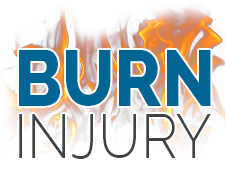Types of Burns
There are different systems used to classify different types of burns. Before treating a burn, it is important to first identify the burn degree, cause of the burn, and scope of the tissue damage resulting from the burn. The main system for classifying types of burns is the degree of the burn, which ranges from first to fourth degree. Types of burns may also be classified by the source of the burn, such as heat, electricity, or radiation.
Burn Classification
The primary way to identify different types of burns is by the degree in which the injury can be categorized. This type of burn classification addresses the layers of skin and tissues in the body. Higher burn degrees are generally labeled by how deeply they penetrate the patient’s skin and tissues.
First Degree Burn
A first degree burn is the least severe of the types of burns. First degree burns affect only the epidermis, or the outermost layer of skin. For this reason, these types of burns typically heal quickly without medical attention.
Second Degree Burn
A second degree burn is classified as a burn that affects both the epidermis and the dermis, or the second layer of skin. Second degree burns are characterized by intensified swelling, pain, and redness than first degree burns. Deep second degree burns may lead to scarring.
Third Degree Burn
Third degree burn injuries penetrate deeper than the dermis to the underlying layer of fat. A third degree burn may appear waxy, stiff, or leathery with a tan or white color. In some cases, third degree burns can cause nerve damage.
Fourth Degree Burn
A fourth degree burn injury can be devastating to burn victims. In these types of burns, the damage may penetrate to the muscle or bones. The patient’s skin may be charred or blackened. In some cases, nerve damage may be so severe that the patient does not feel pain in the affected area.
Sources of Burns
Burns can be caused by a number of different sources. In cases of minor burns, these sources are most often present in everyday life. Other burn sources can be environmental or found in a specialized workplace such as a manufacturing facility.
Temperature Burns
Burns can occur from both excessively hot and excessively cold temperatures. Heat burns most commonly occur from sources such as fire, irons, stoves, hot liquids, and steam. Burns may also occur from cold, such as prolonged exposure to cold, wet, or windy conditions.
Chemical Burns
Chemical burns are often caused by industrial or household chemicals that are corrosive and abrasive to the skin. These burns may occur from chemicals in solid, liquid, or gas form. Typically, chemical burns are caused by direct contact with a strong acid or base.
Electrical Burns
Electrical burns occur rapidly as electricity passes through the body. Electrical burns are typically more severe, causing more damage to tissue layers beneath the skin. In many cases, the severity of electrical burns are underestimated and underdiagnosed. Severe electrical burns may cause shock or strain to internal organs, including the brain or heart.
Radiation Burns
Radiation burns may be caused by UV rays from the sun or tanning booths, x-rays, and certain types of radiation therapy for the treatment of cancer. Radiation burns may also be caused by radio frequency energy and thermal radiation. The effects of radiation burns depend on the energy of the radiation as well as the intensity of exposure.
Sources:
Craig, A.D., and M.C. Bushnell. “The thermal grill illusion: unmasking the burn of cold pain.” Science 265.5169 (1994): 252+. Academic OneFile. Web. 19 Dec. 2013.
Fan, ZhiBin, et al. “Thermal Shock Resistance of Skin Tissue.” Journal of Medical Systems 35.5 (2011): 863-867. MEDLINE with Full Text. Web. 19 Dec. 2013.
Williams, Catherine. “Assessment and management of paediatric burn injuries.” Nursing Standard 25.25 (2011): 60+. Academic OneFile. Web. 19 Dec. 2013.













